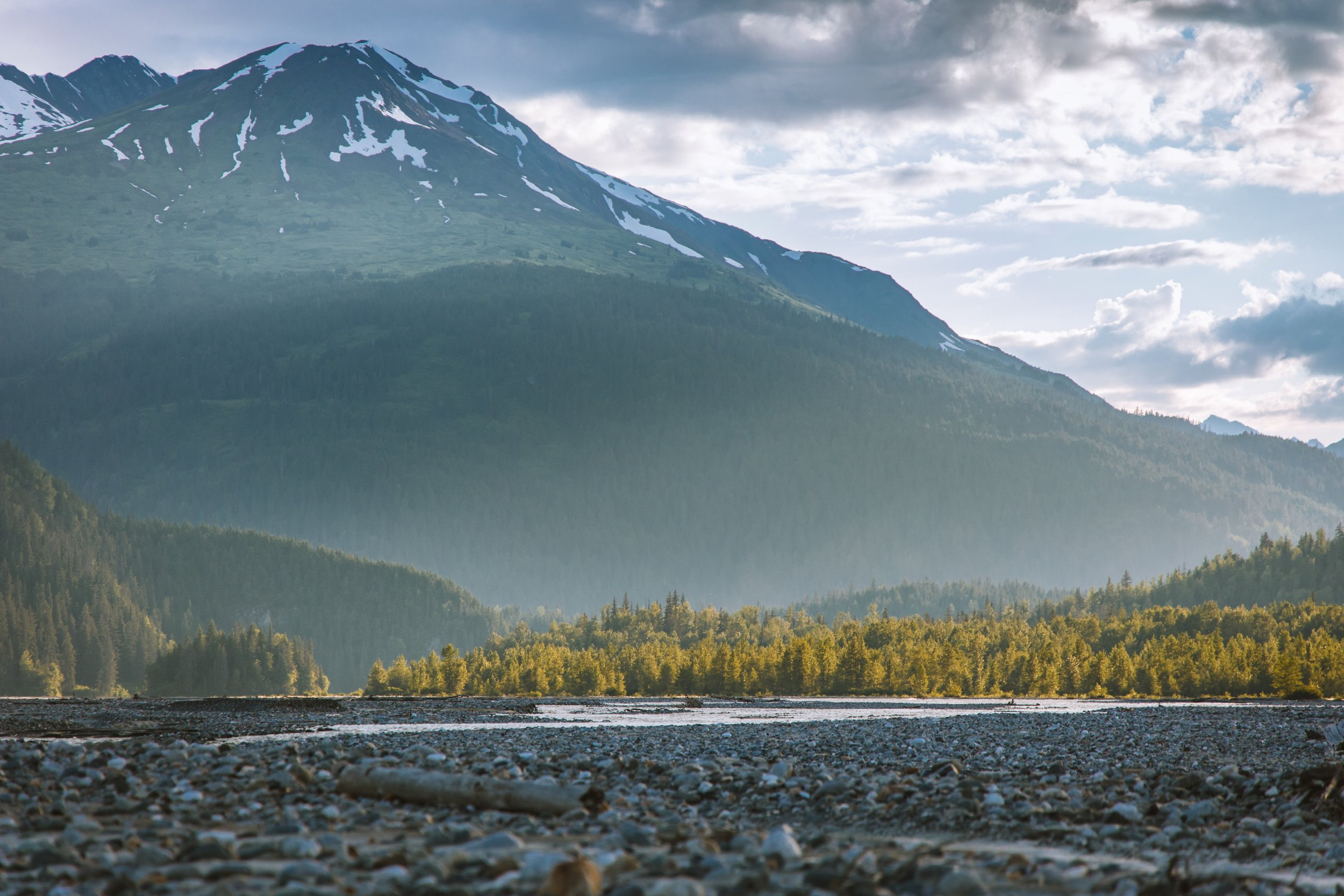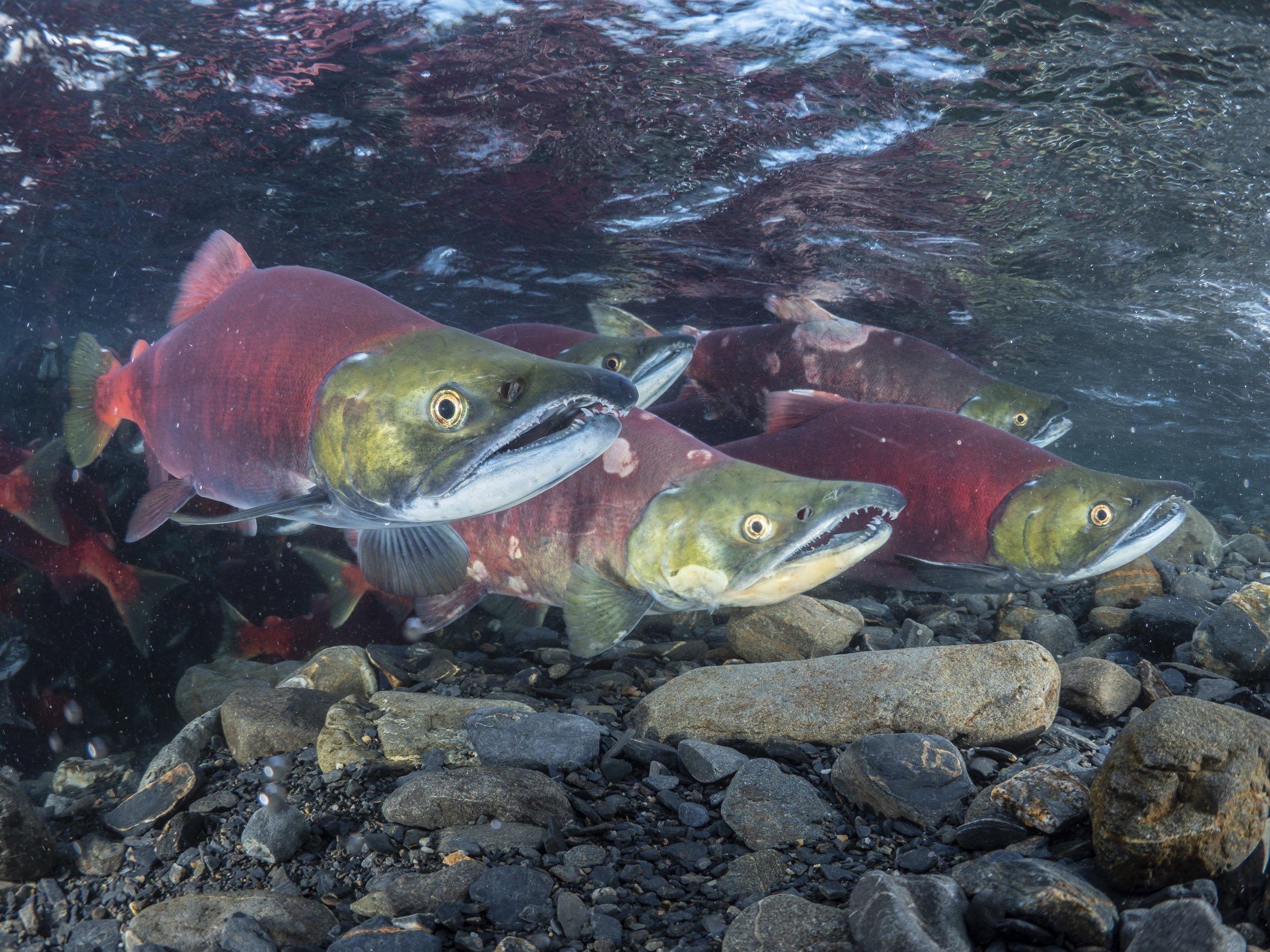
The Chilkat River
Jilkaat Heeni
The Chilkat Valley is characterized by its biodiversity, pristine braided glacial rivers, old-growth Sitka spruce forests, and multiple large mountain ranges. The Chilkat River runs south and southwest through the Chilkat Valley to the head of Chilkat Inlet.
The Chilkat River is home to all five species of wild Pacific salmon, steelhead, and Dolly Varden char, giving it the name “Jilkaat Heeni,” or “Storage Container for Salmon.” It boasts an abundance of thriving wildlife, including moose, brown bear, the second-largest coho salmon run in Southeast Alaska, and the world’s largest gathering of bald eagles.
The Chilkat River is a destination for tens of thousands of annual visitors who travel great distances to experience the scenic vistas, fish and wildlife, and many outdoor recreation opportunities of the region.
The health of the watershed is essential for the robust returns of fish populations, which is important for both commercial fishermen and community members who rely on thriving wildlife habitat for subsistence purposes.
The Chilkat Valley Economy
-
For commercial fishermen, the Chilkat River is the pulse of the local economy. Approximately 109 Haines Borough residents hold active commercial fishing permits, earning a combined $7.7 million in fisheries across the state in 2023. This doesn’t include the dozens of local individuals who crew aboard fishing vessels and tenders or work in the fish processing sector. The Chilkat River hosts the second-largest coho salmon stock in Southeast Alaska, and is home to all five species of wild Pacific salmon. These fish don’t just pay the bills; they fill freezers and feed families in the Chilkat Valley and beyond.
-
The Chilkat Valley is home to hundreds of vibrant local businesses and a thriving tourism sector that contributes to over $241 million in earnings across Southeast Alaska. Visitor traffic, both by land and sea, are anticipated to continue increasing in 2024 – proof that vibrant, diverse landscapes are in high demand, and among the greatest assets of the Chilkat Valley.





